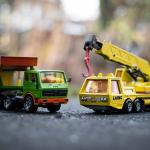
As of 10 April 2018, facilities operating lifting equipment are required to comply with the adopted occupational safety rules. The rules apply to the following types of lifting equipment:
- all types of cranes;
- cranes-excavators, designed to work with a hook or a load-lifting magnet;
- monorail trolleys;
- hoists (manual, electric, hydraulic and pneumatic);
- crane rail tracks (hereinafter referred to as crane tracks);
- crane lifts;
- winches used for lifting cargo and (or) workers;
- cradles for lifting workers;
- cradles for lifting workers with cranes;
- removable load-lifting devices;
- containers, except for special containers used in metallurgical production (buckets, troughs, molds, etc.), in sea and river ports;
- self-propelled (automobile, special chassis, pneumatic, caterpillar, railway, etc.) and trailer lifts (hereinafter - mobile lifts), construction hoists;
- mast lifts (working platforms mast), skip hoists;
- specialized reloading installations;
- lifting cargo platforms (tables) with a lifting height of more than 1.3 m and with platforms accessible for workers;
- lifting platforms (vertical and inclined) for persons with disabilities (persons with disabilities)
- other stationary lifting devices (vertical or inclined) with a lifting height of more than 1.3 m and with platforms accessible for workers.
The rules do not apply to the following types of equipment:
- logging cranes, manipulators, not equipped with a hook, etc.;
- manipulating devices used in robotic systems;
- hoisting cranes and machines intended for use in mines, on sea and river vessels and other floating structures that are subject to special rules;
- excavators, designed to work with earth-moving equipment;
- hoisting cranes, designed exclusively for working with special attachments (vibratory pusher, sheet pusher, drilling equipment, etc.);
- load-lifting machines for special purposes: floor filling and planting machines, pipelaying machines, electric and forklift trucks, bridge car ladders;
- mounting polyspasts and structures to which they are suspended (masts, chevrons, beams, etc.);
- fire lifts;
- equipment intended for military purpose.
The employer is required to monitor and assess the technical condition of the equipment by conducting inspections (initial, periodic, extraordinary technical inspections, expert examination) and supervision of its safe operation.
If the equipment is installed at permanent locations, the employer must ensure its stability, taking into account, in particular, the cargo, rise, and the force arising at the anchor points and points of attachment of structures.
The equipment must have a clear indication of their rated load capacity and, if necessary, it must be provided with a plate (diagram or panel) of the load distribution indicating the nominal load capacity for any equipment configuration. The material from which the sign is made and the inscriptions on it must ensure their safety during the operation of the equipment.
Removable lifting devices must be marked with the main characteristics necessary for their safe use.
Equipment that is not designed to lift people, but which can potentially be used for this purpose, must be indicated as not suitable for lifting people.
Order No. 62 of 19 January 2018 on the Adoption of the Occupational Safety Rules for the Operation of Cranes and Lifting Equipment





